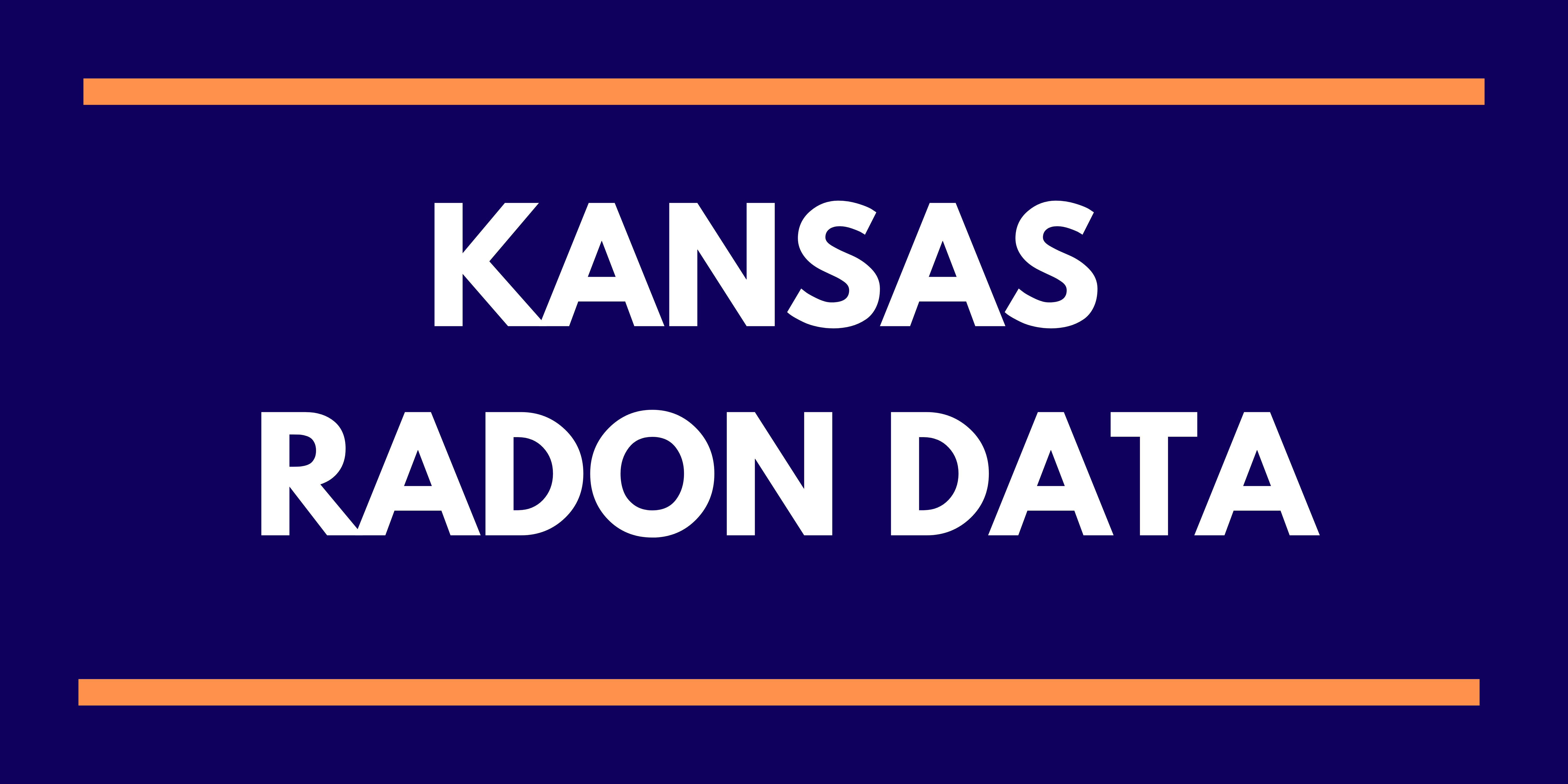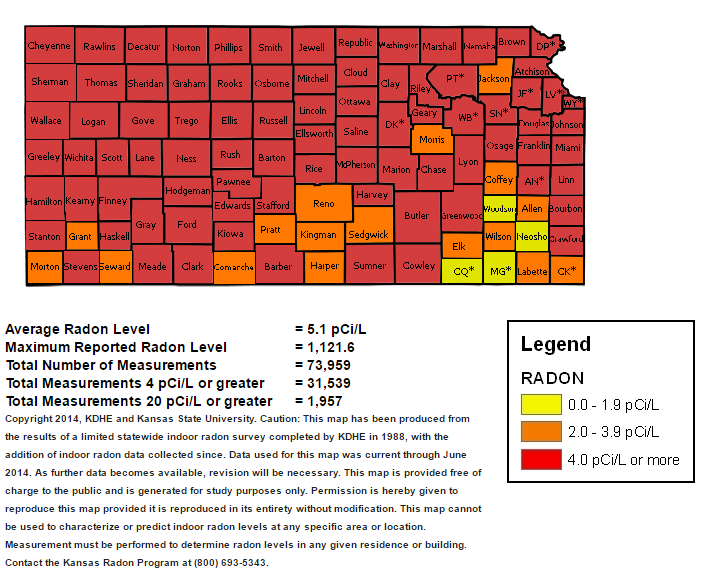Explore Kansas Radon Data
Click on the icon below to explore radon data in Kansas:

Radon News
January is Radon Action Month!
Brian Hanson, the radon program coordinator at Kansas State University, speaks on what radon is and how to tell if it's in your home.
Watch the video here.
What is Radon?
Radon is a natural, tasteless, odorless, colorless, radioactive gas produced from the decay of uranium found in nearly all soils. Radon comes from the natural radioactive decay of radium and uranium found in the soil beneath the house. The amount of radon in the soil depends on soil chemistry, which varies from one house to the next. Radon levels in the soil range from a few hundred to several thousands of pCi/L.
Why is radon a concern?
Radon is the leading cause of lung cancer among
nonsmokers. Radon gas moves from the ground under and around your home and can
enter your home through cracks and other holes in the foundation. Nearly one out
of every 15 homes in the U.S. is estimated to have elevated radon levels. The amount of radon that escapes from the soil to enter the house depends on the weather, soil porosity, soil moisture, and the suction within the house. Nationally, radon contributes to about 21,000 deaths per
year from lung cancer. The risk of developing lung cancer increases as the
concentration and length of exposure to radon increases.
Who is at risk?
Current data indicates that one in four houses in
Kansas may have elevated levels. In some counties this rate may be higher. In Kansas we have high levels of radon in our soils. The average observed residential radon test in Kansas is currently 5.4 pCi/L, which is in excess of the EPA’s action level of 4.0 pCi/L. The maximum reported radon value in Kansas to date is 1121.6 pCi/L. Everyone exposed to radon over generally a long period of
time is at risk for lung cancer. Many scientists believe children may run an
even greater risk from radon exposure than adults, and smokers are definitely at
greater risk than nonsmokers.
How can the risk be reduced?
You can reduce radon levels in homes by preventing radon
entry, increasing ventilation, and removing radon along with its decay products from
the air. When radon testing indicates elevated levels, a trained
Kansas-certified radon mitigation technician is the best choice to correct the
problem. Preventing radon entry is the preferred approach. One of
the most effective techniques is ventilation of the soil under the home so radon
is sucked away before it can enter. This method is called active soil
depressurization (ASD). A system to accomplish this can be installed in an
existing home, or more economically installed during the construction of a new
home. It is the most common and usually the most reliable radon-reduction
method. Suction can be applied to sumps, drain tiles, block walls, and under
membranes in crawl spaces. A fan draws the radon through sealed plastic pipes,
releasing it to the outdoor air above the roofline.
How to test your home for radon
All homeowners should measure radon levels in their homes.
A do-it-yourself radon test is economical, easy to use, reliable, and readily
available.
Your testing process should begin with a short-term test
of two to seven days. If your result is over 4 pCi/L follow up with either a
second short-term test or a long-term test. Long-term tests give a better
understanding of average radon levels. Short-term tests get results quickly. If
either the average result of the two short-term tests or the result of a
long-term test is over 4 pCi/L, you should consider taking steps to reduce radon
levels.
You can also hire a Kansas-certified radon measurement technician to perform your radon measurement, this is the method for radon
testing required by law for real estate transactions.
Homeowners may purchase radon testing kits from local
retail outlets, county extension offices. Prices range from $5 to $35. Any radon
testing kit you purchase will come with instructions on use, specifically the
period of time the device should be exposed. The most popular, commercially
available detectors are short-term charcoal canister or pouches, and the
long-term alpha track detector. Follow the instructions on the test and test in
the lowest livable level of the home.
After exposure, canisters and detectors should be sealed
and immediately returned to the laboratory for analysis to determine the radon
level to which the device was exposed. Results should be provided to you within
30 days. You can be confident in the test results if you follow instructions
carefully and immediately return the test kit to the laboratory.
How is radon tracked?
Radon testing is not required in Kansas. However, by law
contractors and laboratories are required to report testing and mitigation data
to the Kansas Department of Health and Environment (KDHE) within 90 days. Within KDHE, the data is kept in a secure database and used
for programmatic and administrative purposes. The data is collected at the
address level, which allows credible assessments of the level of radon gas in
tested homes in a certain area. However, all reports and publications are
strictly kept anonymous and do not include the names or addresses of
individuals.
Kansas County Radon Map
To download the Kansas County Radon Map click on the image below.
,
Smoking, Radon, and Lung Cancer
Resources